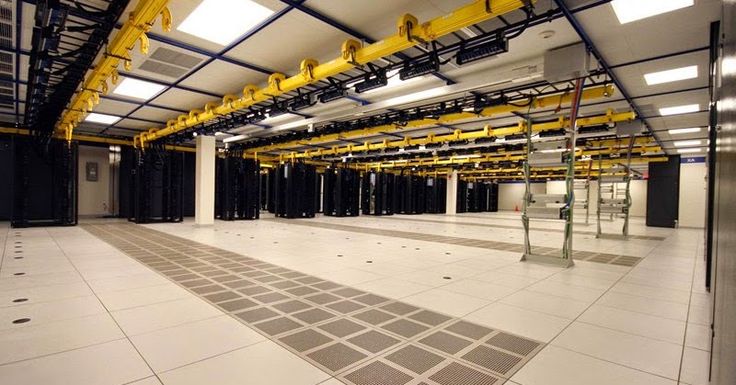Application of BIM in Data Center Construction
Data Centers are among the most complex building types which requires significant amount of coordination among design and construction teams. Data Center Construction often have tight project schedules and tight spaces in planning. Technically, no project benefits more from coordination using building information modeling and virtual design construction other than data centers.
Key takeaways:
- How data center construction projects benefits from BIM process during space planning phase?
- Prefabrication coordination needs BIM to deliver uber fast track projects.
- Data center construction phasing management in BIM
- Raised floor / false floor coordination with MEP systems using BIM
- Coordinating services inside BIM models before actual construction
- Enabling commissioning and O&M record keeping in 3D BIM Revit models
- Air Flow Analysis & Simulation (CFD) using BIM
Generally, everyone talks about benefits of BIM for coordination and clash detection on projects but when you talk about all the complex electrical conduits lines that you are running through tight spaces, its much more complex environment with tight spaces.
The more coordination becomes important, the more application of BIM in data center construction becomes useful.
We reached out to many professionals specializing in data center projects to identify the areas of planning, design & construction and how they are getting the most value out of BIM / VDC coordination.
Space Planning
Typically, data centers are having huge mechanical and electrical capacities compared to their built up area. More than 25 times the typical commercial buildings. The equipments are typically placed near to server rooms to reduce the risk of IT equipments. together, these factors create incredibly dense equipment spaces and major ducts, pipes and conduits are required.
Application of BIM in data centers helps designers to confirm that equipments and services distribution can fit to these tight spaces allowing maintenance and service area clearances are achieved. Furthermore, it allows to analyze voltage drops and pressure drops with actual routing. Similarly, underground electrical feeders can become so dense that they could overheat (Eddy current loss appears in the form of heat) and melt if not designed properly. BIM allows precise routing which enables electrical engineers to model the heat dissipation and adjust the electrical ducts / bus bars configuration accordingly.
Prefabrication Coordination
Clients including wholesale operators, technology companies, and financial institutions are pushing the speed of new construction and retrofitting projects. Fast track is past, ultra fast track projects are the new standards which are looked by clients to get their data centers up and running sooner.
To help speed up the construction of data center projects, contracting companies are prefabricating many of the building systems and components from enclosure to mechanical and electrical systems. BIM / VDC is critical for designing and testing prefabrication concepts with respect to logistics such as material handling, path of travel and installation sequence.
We have delivered logistics planning visualization to several prefabrication contracting companies. Majority of such project requests comes from Middle East, South Asian Countries including India and Singapore.
says Marketing Manager from Vee 7 Information Technology LLC, Dubai, Middle East
To keep up with the speed, several prefabrication contractors are constantly pushing the amount and types of items they fabricate at their facilities. This allows them to minimize the amount of fit-up and welding in field environment and allows to maintain excellent quality assurance due to the majority of their work being built in a controlled, workshop environment.
A recent example of a completed data center project required 500 welds for the piping system, out of which only 30 was needed to be performed on site. The reduction of onsite welding required only one welding machine onsite. It also decreased field installation time from about 30 working days to only 8 working days.
Tip: Ensure to include system hangers in BIM models which helps to fabricate all piping supports and hangers in bulk, deliver early to site and have installation completed prior to piping and ductwork material deliverables.
Project Phasing Management
Generally Data Center construction is phased to avoid building out expensive capacity which is not required on day one. Often, the initial capacity target shifts during design development and construction activity due to leasing activity and the difficulty of projecting the need for computing power.
By utilizing phasing feature that BIM offers, teams can analyze the cost, schedule and energy consumption at different phases. BIM supports phasing of projects by quickly allowing the team to modify the design drawings and documents by adding or subtracting modules of power and cooling. After day one construction is complete, BIM helps in future development with an accurate record of the as-built condition allowing teams to plan further deployments with confidence.
Integrating raised access floor layouts / false floor layouts
False floors or raised floors can be tricky, especially because most of the floor installers do not model their installations or adjustments for structural bridging and supports are typically planned onsite. By developing the BIM model of the raised flooring allows the installation teams to understand where MEP systems are located in conjunction to pedestal support system.
By coordinating and integrating this into 3D modeling process, flooring contractors can see where they need to modify their support framing early in the process and fabricate the necessary bridging and support components which spans across the MEP systems wherever required. This helps in eliminating time and efforts it would take to do this in field once MEP systems are installed thereby decreasing the field installation time.
Conflict free routings
The capacity transmission from densely packed equipments requires multiple layers of stacked conduits, ducts and piping. Using the BIM model, the detailers can pick up where the designers left off adding more information to each elements.
Tight construction schedules don’t allow field routings to solve conflicts, therefore the routing must be solved during the detailed design stage allowing for 99 percent conflict free installations.
Commissioning and O&M tasks
To ensure performance and reliability, robust commissioning processes are required for data centers. Commissioning information such as tags for each equipments and feeder are added to 3D BIM models for keeping a live database of commissioning process status.
For greenfield data centers or newly built data centers, the information is must valuable to operation staffs. Mainly submittals, O&M manuals, as-built plans and sections, balancing reports, commissioning reports which are generally never transferred to them and are often lost over the years as personnel are changed during the lifecycle of projects.
When this type of information is present in 3D BIM models, these information can be retained and viewed for each piece of equipment rather than separate volumes. Whether they are facing problem or trying to improve energy efficiency, data center operators are benefitting from such comprehensive set of information.
Air Flow analysis
Analyses such as Computational Fluid Dynamics (CFD) simulations inside BIM models allows engineers to fine tune the server layouts based on thermal modeling approach. By incorporating that process in Revit models, clients are able to visualize how the air flows are forming inside the data center and temperature variations are happening based on air flow movements.
It is essentially helpful in being able to see how servers in a computer room receive cold air and how hot air is removed.
CFD modeling and analysis is more as a design verification of engineering calculations than as a design tool. It is really a fine tuning process.
We develop 3D models using BIM process for design and construction phases of data center projects. If you are looking to implement 3D BIM Revit models into your delivery of data center projects, get in touch with us at contact@oneclickbim.com.

